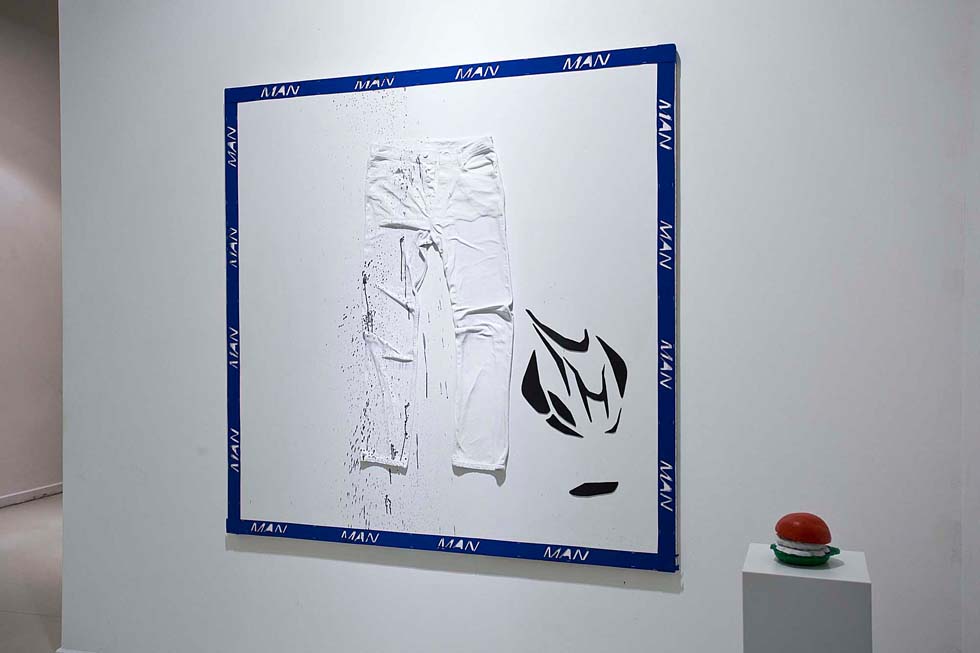

















Standing In Front Of Objects
Levente Baranyai, István Felsmann, Barbara Follárd, Tamás Hencze, Zsófia Keresztes, Adrián Kiss, Tamás Komoróczky, Gergő Kovács, Áron Kútvölgyi-Szabó, Mira Dalma Makai, Erik Mátrai, Sándor Pinczehelyi, Dezső Szabó, Attila Szűcs
The idea of the exhibition was inspired by the thoughts of Didi-Huberman, and Földényi F. László’s book, entitled Standing in front of pictures. One of their conclusions is that the understanding of an artwork is subjective; it is based on our personal knowledge, emotions and inner world.
The list of artworks presented in Standing in front of Objects is subjective, based on the likings of the two curators, and with no desire of completeness. We solely invited artworks that we already knew, works that have important roles in the oeuvre of the chosen artists’, on top, possess an unquestionable beauty. The artists were selected from three generations, and the common ground was the unusual use and combination of materials. All chosen works are charged with emotions, and beside their strong visuality, they comprise multifaceted narratives. The fourteen works do not connect in a linear concept but linked rather as an unfolding chain of personal narrations. The exhibition is multicolored in terms of media as well, we show works from traditional oil on canvas to bone-construction, from plaster to izofoil.
Levente Baranyai stacks the oil paint onto the canvas in such scale, that his realistic landscapes almost become reliefs, while the work’s critical perception remains strong. Young Mira Dalma Makai exhibits ceramic sculptures. Her sprawling, organic objects are molded to remind us to our most important inner organ, to our hearths. Dezső Szabó’s classic lacquer painting is a result of experimentation, of mixing different types of lacquers. The result is lyrical, somewhat sensual surface, very unusual in the artist’s oeuvre.
Zsófia Keresztes, an exceptional young artist, who works with ephemeral materials, operates with multiple symbolism. Her burning scale refers not only to classic – mythological or urban – legends but our society of overconsumption. The symbol of fire is also essential in Tamás Hencze’s so called fire images. The notion of passing, of demise appears in this triptych from the 1970’s. This works is one of the most important pieces of the Hungarian conceptual art. An atypical work from painter, Attila Szűcs is a relief – a plaster door handle opening into nowhere – was made at the beginning of the 90’s. This work points to metaphysical allusions, such as the light installation by Erika Mátrai. The brilliance of this work lays in its simplicity, in the single gesture of painting a musical instrument, an organ with light. Barbara Follard is known of her minimalist video works. Here, we choose a little object that recalls the language of filmmaking, as minor components of the frozen scenes are arranged in linear sequences follow one another.
Áron Kútvölgyi-Szabó’s iron-construction hidden by izofoil reminds us to the fall of Icaros, and its imagery plays a vital role in the artist’s personal mythology. A rather strange sculpture by Tamás Komoróczky is made of bones. This unusual piece reflects to the idea of the Greek-Armenian philosopher, Gurdijeff, who states that all the living things in the universe sustain each others’ reciprocs. The question of male and female attributes is posed in the work of young Adrián Kiss. Here, a unisex Levis jeans is applied onto a canvas and framed within an Yves Klein-blue fabric. This object, just as Sándor Pinczehelyi’s cultic tricolor hamburger, ascends from its original context, and the meaning of both works change so they are no longer simple commercial trademarks but key symbols of our consumer society. Gergő Kovács’s foil-sculpture is another vitty gesture, in which he accentuates the meaning of an actual work process, of the horse-shoeing. The memory of careless childhood comes to mind first while standing in front of István Felsmann’s lego object. However, the artist doesn’t only refer to our familiar past but to the tradition of constructivism, and to the perplexed visuality of the XXI. Century.
Special thanks: acb Gallery, Chimera-Project, Horizont Gallery, Vintage Gallery
02. 04. 2016. - 03. 05. 2016.
Curators: Erika Deák, Zita Sárvári